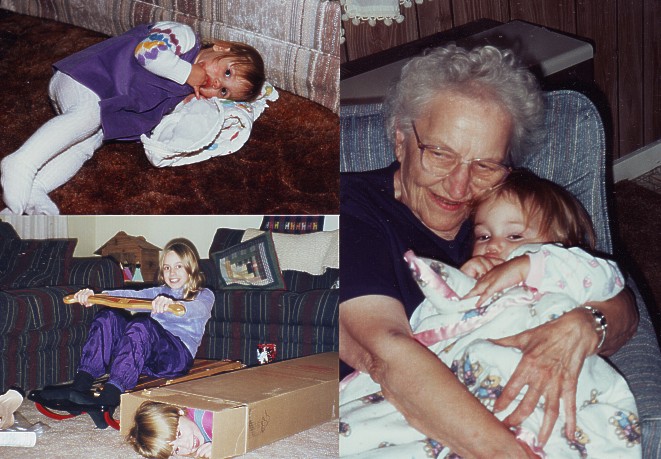
Kansas Snapshots by Gloria Freeland - Nov. 23, 2012
A blanket statement
A few nights ago while husband Art and I were waiting for an orchestra performance to begin, a little girl in a lacy white and burgundy dress threw her well-worn blanket over her shoulder and marched up the auditorium steps as only a determined toddler can do.
I smiled. She reminded me of daughters Mariya, now 26, and Katie, almost 20, who at one time were inseparable from their "blankies." Both girls used them as comfort items at bedtime, but they also used them at play. The blankets sometimes served as hats, capes, invisibility cloaks, wrapping "paper" and picnic tablecloths.
I was surprised to discover the blanket was inducted into the National Toy Hall of Fame a year ago this past week. The list of 51 toys includes Play-Doh, dominoes, "Star Wars" action figures, the Slinky, The Game of Life, Crayola crayons, LEGOs, Barbie, Lionel trains, the Etch-A-Sketch, Candy Land, Mr. Potato Head, marbles ...
And the cardboard box and the stick.
Really? The cardboard box and the stick?
More investigation was called for!
From its website, I discovered the National Toy Hall of Fame was established in 1998 and recognizes toys "that have inspired creative play and enjoyed popularity over a sustained period." Anyone can nominate a toy, and thousands of suggestions come in every year. A committee of curators, educators and historians chooses the 12 finalists and then a national selection committee picks the winners.
The hall of fame is one of several Rochester, N.Y.-based partners at "The Strong" - "a highly-interactive, collections-based educational institution devoted to the study and exploration of play." Its other "Play Partners" are the National Museum of Play, the International Center for the History of Electronic Games, the Brian Sutton-Smith Library and Archives of Play, and the American Journal of Play.
An institution devoted to play? How fun is that?
But back to the cardboard box and the stick.
When they were little, Mariya and Katie were fascinated by cardboard boxes. They used shoe boxes to make caterpillar homes and doll furniture. Larger boxes became cars, houses, castles and stores. I sometimes wondered whether it was worth buying expensive toys for their birthdays or Christmas when they seemed to be perfectly entertained with the boxes they came in.
Of course, this is hardly anything new. When he was in kindergarten, husband Art asked for electrical plugs for his birthday. He poked them into small round boxes his parents had bought cheese in, thus converting them into "electrical outlets."
The stick was inducted into the National Toy Hall of Fame in 2008. "Sticks are not only possibly the oldest toys, they're possibly the best," according to the description on the hall's website.
I can attest to the stick's multifaceted functions.
Mariya and Katie used sticks as swords, canes, "Harry Potter" wands, fishing poles and tools for drawing designs in the sand.
I played with sticks when I was growing up, too. They were great for digging small river trenches and for batting rocks against the barn. They were also nifty batons when I directed my imaginary band. And they put texture into my mud pies.
Uncle Stan recalls that he, his brother Bob and my Dad played with a special kind of "stick" - a chicken leg with the foot still attached. That seems a bit odd to me, but I can't deny the creativity involved in running around and making chicken scratches in the dirt!
While the girls' sticks and cardboard boxes are long gone - except in the many photos I took over the years - the tattered remnants of their blankets remain. Katie has pieces of hers in a dresser drawer. Mariya said of her "ba-ba" pieces, "I keep them in the dresser drawer that my jammies are in. They don't come out often, but I like knowing they're there."
Soon the show began and I didn't notice the little girl in the white and burgundy dress again. But I imagine she was somewhere in the auditorium, watching what was going on while still firmly hanging on to her old friend, her "blankie."

Top-left: Mariya, age 2, with her "baba;" right: Art's mom Donna cuddling with Katie, also at age 2, and her "blankie; bottom-left: while Mariya waits for the Christmas sled to be fully assembled, Katie makes good use of the box it came in.
Comments? [email protected].
Earlier columns from 2012 may be found at: 2012 Index.
Links to previous years are on the home page: Home